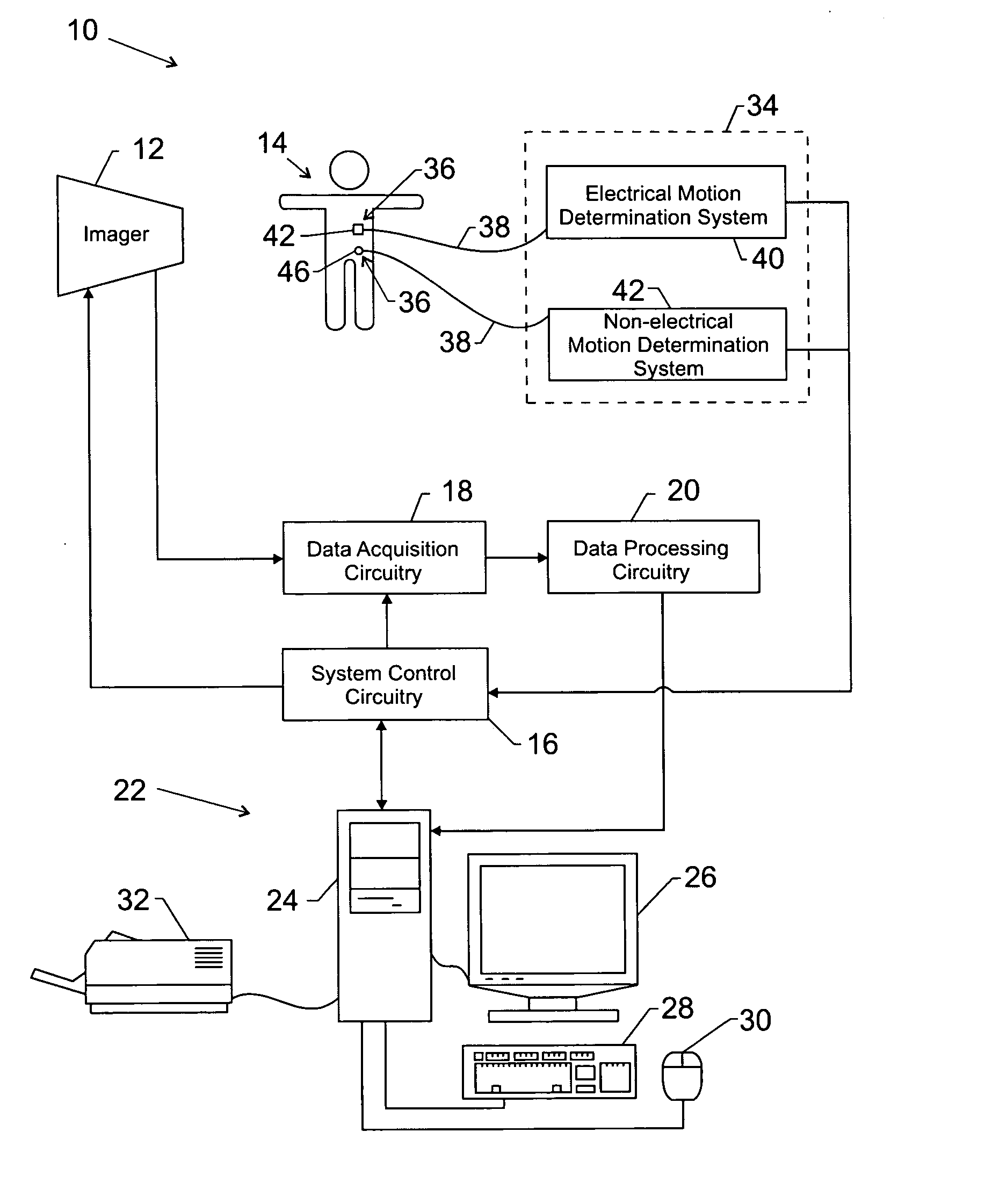Method and system for composite gating using multiple inputs
a composite gating and input technology, applied in the field of overall motion measurement, can solve the problems of incomplete reconstruction images, various motion related artifacts or discontinuities, and images that still possess motion artifacts
- Summary
- Abstract
- Description
- Claims
- Application Information
AI Technical Summary
Benefits of technology
Problems solved by technology
Method used
Image
Examples
Embodiment Construction
[0025] In the field of medical imaging, it is often desirable to characterize the motion of an imaged organ so that the motion may be accounted for to improve image quality. Measures of the muscular activity of the organ of interest, however, may characterize only a portion of the overall motion of the organ relative to the viewer or imaging scanner. In particular, the overall motion may consist of not only the muscular contractions of the organ of interest itself, i.e., the inherent motion, but also motion attributable to the movement of proximate organs. For example, the overall motion of the heart may consist of not only the muscular contractions of the heart but also the movement of the lungs, the movement of the diaphragm, or other proximate muscular contractions, voluntary and / or involuntary, of the patient's body. Therefore, in the example of cardiac imaging, it may be desirable to characterize the overall motion of the heart relative to the imager, not simply the motion attr...
PUM
 Login to View More
Login to View More Abstract
Description
Claims
Application Information
 Login to View More
Login to View More - R&D
- Intellectual Property
- Life Sciences
- Materials
- Tech Scout
- Unparalleled Data Quality
- Higher Quality Content
- 60% Fewer Hallucinations
Browse by: Latest US Patents, China's latest patents, Technical Efficacy Thesaurus, Application Domain, Technology Topic, Popular Technical Reports.
© 2025 PatSnap. All rights reserved.Legal|Privacy policy|Modern Slavery Act Transparency Statement|Sitemap|About US| Contact US: help@patsnap.com



